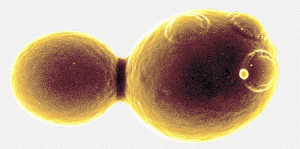Yeast starters:
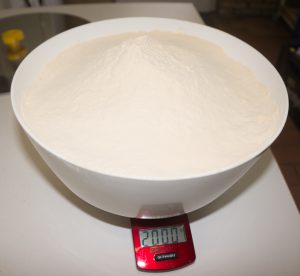
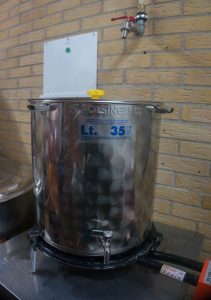
Three days before we want to brew, the yeast is prepared. We boil 15 - 30 liters of water in a stainless steel 35 liter yeast container and add approx. 2-5.5 kg. malt extract. The mixture should boil for 15 minutes, after which the yeast container is cooled in a large pot.
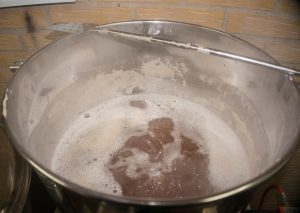
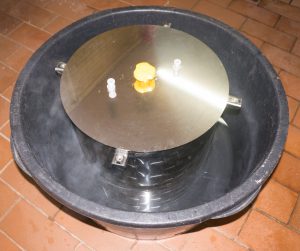
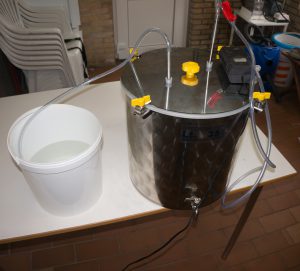
When the temperature has reached 20 ° C, we can add the yeast, mount the tight-fitting lid and supply copious amounts of oxygen using a sterile air pump with sterile air filter. We have a yeast lock by the container, in the form of a bucket of water with a little Rodalon added so that no impurities can enter. We multiply the yeast for approx. 3 days before use.
The yeast starter provides a great saving on the price of yeast. In a few days, the number of yeast cells increases 2-3 times. The amount and type of yeast needed varies depending on the type of beer and the amount we need to brew. It is important that this process is absolutely sterile.
Yeast:
There are many types of yeast for beer brewing, both as freeze-dried powder and as liquid yeast. There are not so many varieties of the freeze-dried, but very many of the liquid which are also the most expensive. The choice of yeast is paramount. It is the brewer who makes the Wort, but the yeast who makes the beer. The same Wort will with different yeast give completely different beers. Larger breweries recycle the yeast from brew to brew, but since we do not brew often enough, we have to buy new yeast every time.
Yeast is a single-celled fungus which, when fermented, breaks down sugar into alcohol and substances, esters, which give the beer an aroma. One mainly distinguishes between two types of yeast, upper yeast and lower yeast. Upper yeast is used for Ale and Stout types, and lower yeast for lager types. Yeast cells are between 6μ and 20μ large.

